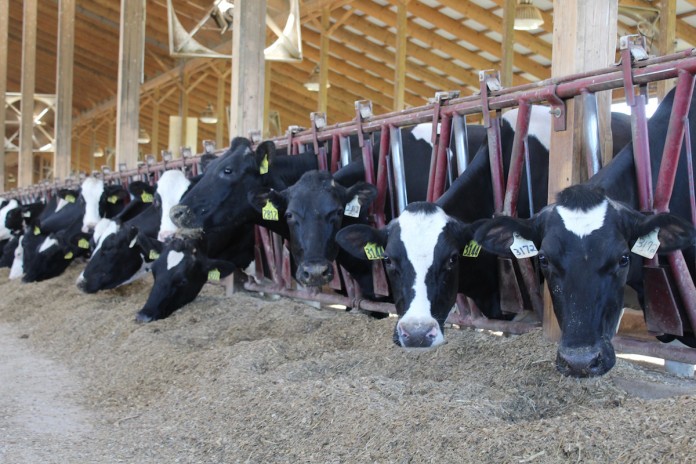From large to small, dairy was a data-driven industry for many years, long before any other species of livestock or agronomy crops.
In the days of glass milk jars, we had daily milk weights, and then moved to monthly milk weights as testing technology changed.
In the basement of some old farmhouses are milk test kits for milk solids, fat and protein.
Now on many farms we are back to daily milk weights and even information on how active the cow is.
Based on information presented at the International Precision Dairy Farming Conference by Aidan Connolly, by the year 2067, per capita consumption of dairy is projected to increase from 87 kilogram per person to 119 kilogram per person.
While this is attainable, the question is what role data will play in advancing production and helping to answer consumers’ questions on animal welfare.
Sensor technology
Sensors have become an everyday part of management in agriculture. In dairy, many of these sensors are wearables on the cow’s ear, neck, legs or tail.
The goal of sensor technology is to manage cows on an individual basis and identify illnesses before production is affected, and improve animal welfare.
The most used technology today detects locomotion, lying time, rumination and eating for detection of estrus and alerts for cows that need checked for health problems.
In-line milk sensors are becoming more reliable to measure milk fat, protein, somatic cell counts, progesterone and even antibiotics.
As these sensors advance, they will be the key to precision cow management and the ability to detect disease for early treatment or prevention.
One major challenge currently is the amount of data produced and the ability to understand this data.
Drones
Even drones are finding their way into the dairy industry, mostly in pasture-based operations.
They’re used to aid in herding and fence inspection, but also in some cases, they are used to find and monitor cows in the barn.
3D printing
3D printing is starting to make its mark as well with the possibility to have parts printed in real time.
The manufacturer sends the schematic to your printer, and in a matter of hours, you have a new part instead of waiting weeks for it to ship across the ocean.
This will also make it easier to farm in developing countries that don’t have a network of dealers to service equipment.
Even more interesting but concerning is the printing of 3D food. Cheese is one of the easiest foods to print.
While the concept of printed foods is not growing rapidly like other alternative foods, it is slowly gaining footing in cases where it improves taste or nutritional value.
The social license will be an important piece to the future of the dairy industry, if not the most important part.
Virtual reality
Virtual reality will be part of this and is coming to the farm in many ways.
In some European countries, there are now farm tours in the grocery store, allowing consumers to see the farms that their food is coming from.
While this is not common in the U.S., there are a few restaurants and niche markets that are adopting this technology to bring consumers closer to the farm.
Augmented reality
Adding into this is augmented reality, which allows farmers to see a cow’s individual information by looking at them as they walk through the barn right on their glasses, no phone or tablet to drop.
These two technologies could also help lower veterinary cost in remote locations by allowing to them to do virtual health checks or autopsies on cows.
As technology continues to advance, the way we farm will also advance. Those who embrace both tradition and technology will see great success.
Cow managers will use this technology to take even better care of their cows, and farm managers will be able to fine-tune profitability down to the cow level.













